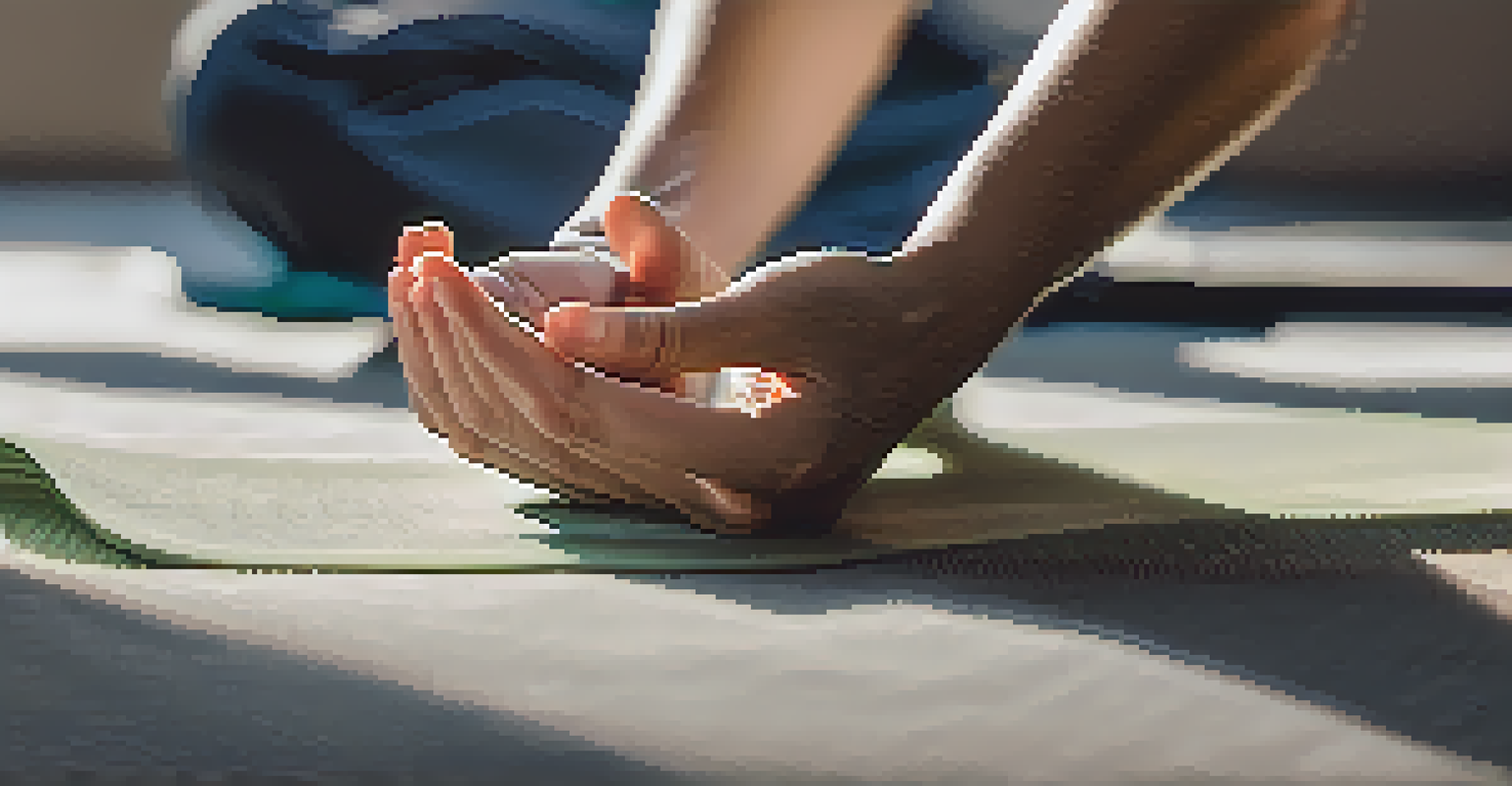How Yoga Can Help You Disconnect from Digital Distractions

Understanding the Need to Disconnect from Digital Devices
In our fast-paced, tech-driven world, digital distractions are everywhere. From constant notifications on our phones to the endless scroll of social media, it's easy to feel overwhelmed. This barrage of information can lead to stress, anxiety, and even burnout, making it crucial to find ways to disconnect.
The greatest weapon against stress is our ability to choose one thought over another.
Many people find themselves mindlessly checking their devices, often losing track of time and missing out on real-life experiences. This habit not only disrupts our focus but also diminishes the quality of our interactions with others. Recognizing the need to step back is the first step towards creating a healthier relationship with technology.
Yoga can serve as an effective antidote to this digital overload. By cultivating mindfulness and presence, yoga encourages us to tune into our bodies and breathe, rather than our screens. This is where the journey to disconnecting from digital distractions begins.
How Yoga Promotes Mindfulness and Presence
One of the core principles of yoga is mindfulness, which involves being fully present in the moment. This practice encourages us to focus on our breath, movements, and the sensations in our bodies, helping us break free from the mental clutter caused by digital distractions. When we practice mindfulness, we learn to observe our thoughts without judgment, creating space for clarity and calm.

Engaging in regular yoga practice trains our minds to become less reactive to external stimuli, including digital notifications. Instead of immediately reaching for our devices, we start to notice our urges and can choose to respond differently. This shift in perspective is empowering and can significantly reduce the compulsion to stay glued to screens.
Disconnect to Reduce Digital Overload
Taking breaks from digital devices helps alleviate stress and enhances real-life experiences.
Moreover, mindfulness gained through yoga can enhance our overall well-being. As we develop this skill, we may find ourselves enjoying daily activities more deeply, whether it’s savoring a meal or having a conversation, leading to a richer and more fulfilling life.
Creating a Dedicated Yoga Routine
Establishing a regular yoga routine is key to reaping its benefits in disconnecting from digital distractions. Aim to carve out a specific time each day, even if it’s just 15-20 minutes. This could be in the morning to set a positive tone for the day or in the evening to unwind and reflect.
Disconnecting from technology is the first step towards reconnecting with yourself.
Creating a dedicated space for your practice can also enhance your experience. Find a quiet corner in your home, free from digital devices, where you can roll out your mat and focus solely on your practice. Surrounding yourself with calming elements, like plants or soft lighting, can further help create an atmosphere conducive to relaxation.
As you establish your routine, remember to be patient with yourself. Yoga is a personal journey, and the goal is not perfection but progress. The more consistently you practice, the easier it will become to disconnect from digital distractions and cultivate a sense of peace.
Incorporating Breathing Techniques to Manage Distractions
Breath is a powerful tool in yoga that can help us manage stress and reduce the desire to reach for our devices. Techniques like deep belly breathing or alternate nostril breathing can calm the nervous system and bring us back to the present moment. When we feel overwhelmed by digital distractions, taking a few moments to focus on our breath can be incredibly grounding.
For instance, try the 4-7-8 technique: inhale through your nose for 4 seconds, hold your breath for 7 seconds, and exhale slowly through your mouth for 8 seconds. This simple practice can help clear your mind and restore focus, making it easier to step away from your screens.
Yoga Cultivates Mindfulness
Practicing yoga promotes mindfulness, allowing individuals to focus on the present and manage distractions effectively.
Incorporating these breathing exercises into your daily routine can enhance your overall yoga practice and help you cultivate a more mindful approach to technology. By learning to control your breath, you also gain greater control over your reactions to distractions.
Exploring Yoga Styles That Encourage Digital Detox
Not all yoga styles are created equal when it comes to disconnecting from digital distractions. Practices like Hatha, Yin, or restorative yoga emphasize slow movements and deep relaxation, making them perfect for winding down and unplugging. These styles encourage you to focus inward, allowing you to cultivate a sense of stillness away from the digital noise.
In contrast, more vigorous styles like Vinyasa or Ashtanga can also be beneficial, as they require concentration and commitment. Engaging in a challenging practice can help redirect your energy and attention away from distractions, immersing you fully in the physical experience of yoga.
Ultimately, the best style for you is one that resonates with your needs and preferences. Experimenting with different classes can help you find the perfect fit that promotes disconnection from the digital world while enhancing your overall well-being.
Setting Boundaries with Technology Through Yoga
Yoga not only helps us develop mindfulness but also encourages us to set healthy boundaries with technology. As we cultivate self-awareness on the mat, we become more attuned to how our digital habits affect our mental and emotional states. This awareness empowers us to make conscious choices about when and how we engage with technology.
For example, after a yoga session, you might realize that you feel more centered and less inclined to check your phone immediately. You might choose to allocate specific times for social media or email, allowing you to enjoy your yoga practice without constant interruptions from the digital world.
Establish Healthy Tech Boundaries
Yoga encourages setting boundaries with technology, leading to a more balanced and fulfilling lifestyle.
Setting these boundaries can lead to a more balanced lifestyle where technology serves us rather than dominates our time. By prioritizing our well-being through yoga, we can create a healthier relationship with our devices.
Long-Term Benefits of Disconnecting through Yoga
The long-term benefits of disconnecting from digital distractions through yoga extend far beyond the mat. As we practice regularly, we cultivate greater mental clarity, emotional resilience, and physical health. This holistic approach not only enhances our yoga practice but also positively impacts other areas of our lives.
Many individuals report improved focus and productivity after incorporating yoga into their routines. By developing a more mindful approach to life, we can make better decisions, manage our time more effectively, and enhance our overall quality of life. This is a powerful way to combat the overwhelming nature of constant digital connectivity.

Ultimately, yoga empowers us to create a healthier balance between our digital and real-world experiences. By prioritizing mindful practices, we can enjoy the benefits of technology while still nurturing our well-being and connection to the present moment.